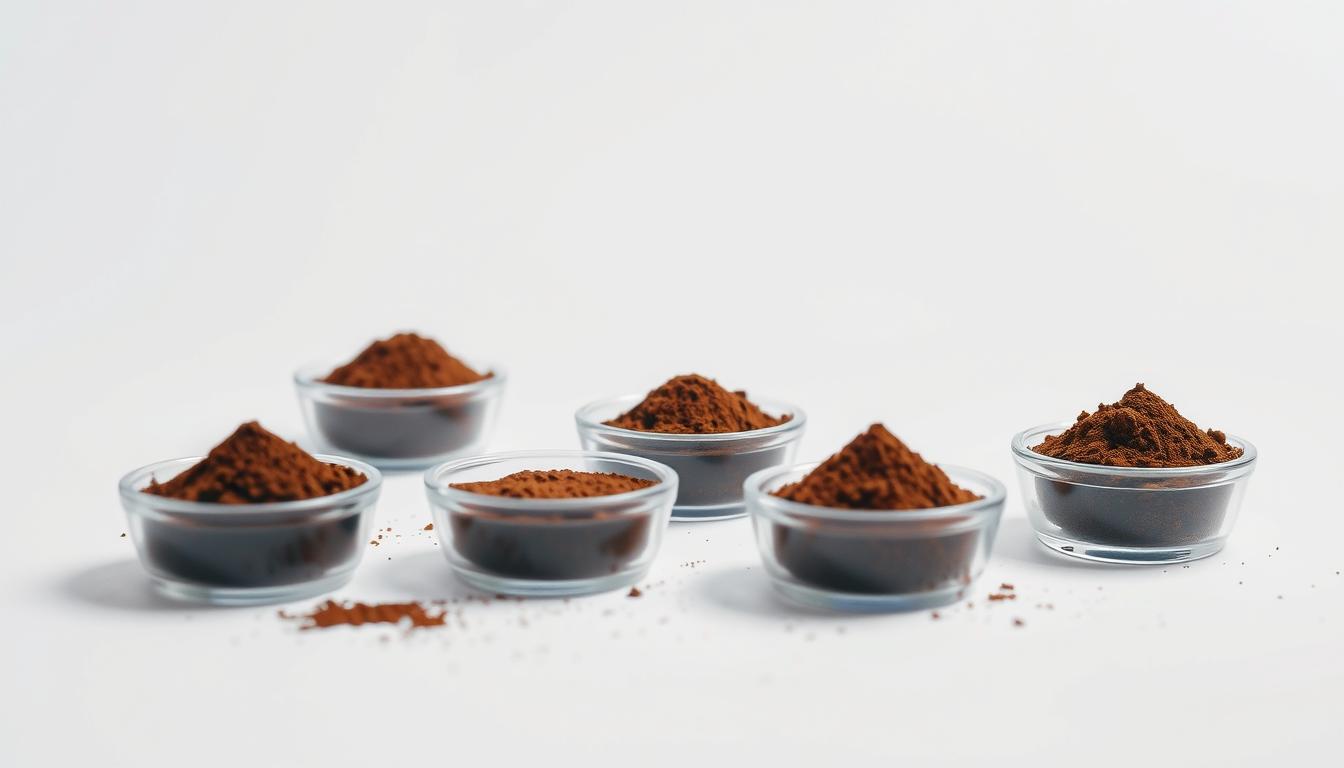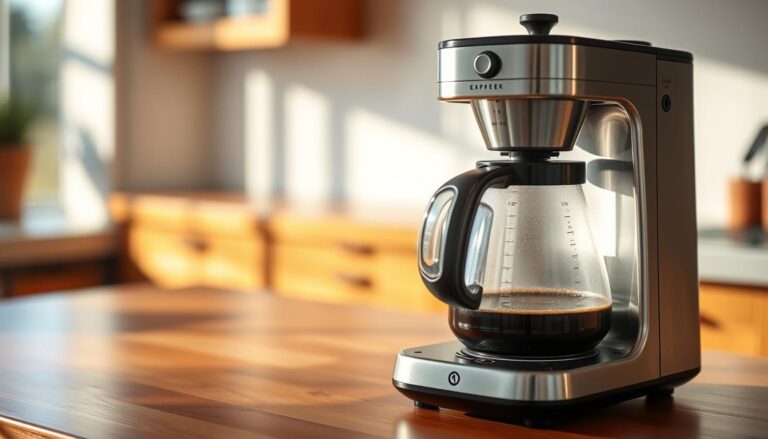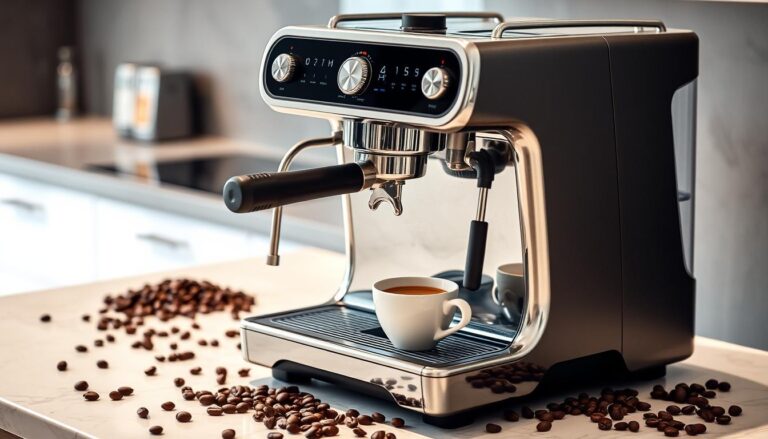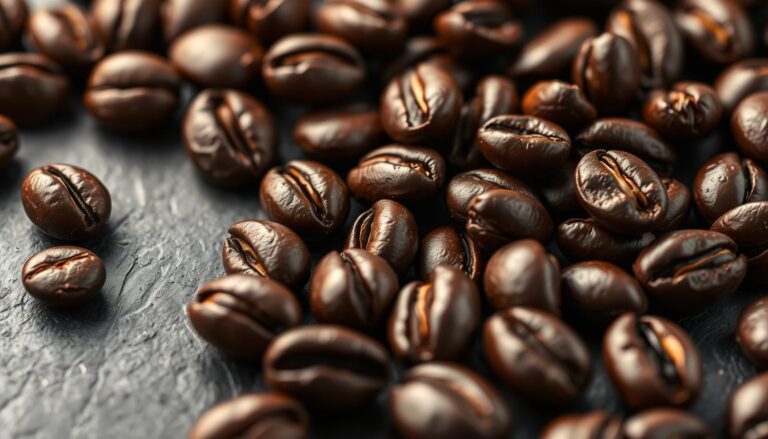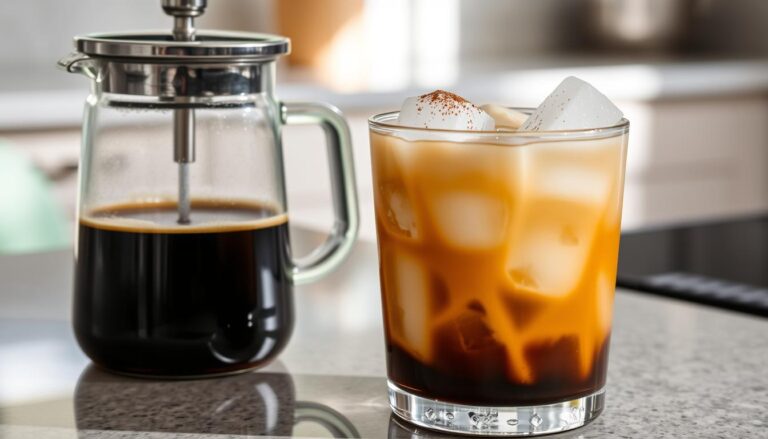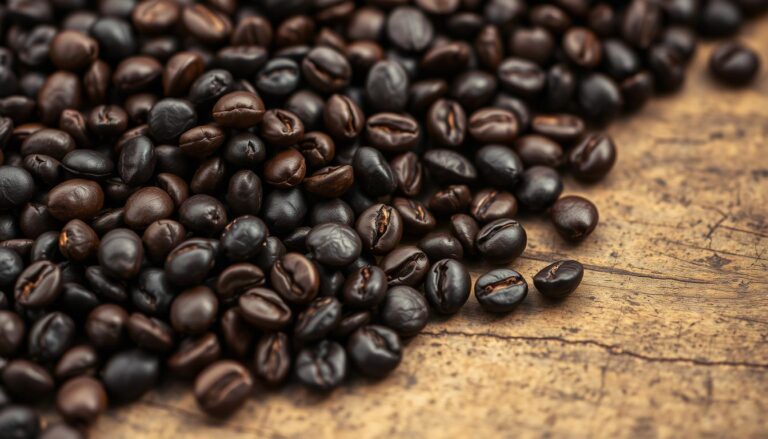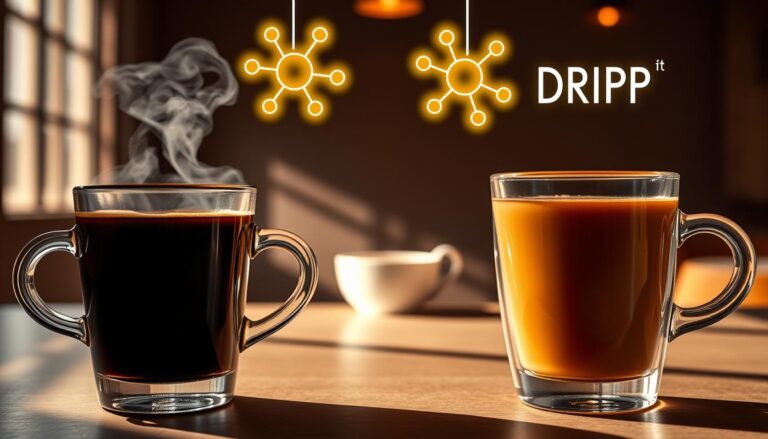Ever thought about how much instant coffee you need for a rich espresso-like brew?
Instant espresso is loved for its ease and quickness. It gives a flavorful cup without needing an espresso machine. While it can’t be exactly like traditional espresso, it can offer a deep flavor when made right. We’ll look at the basics: just instant coffee and hot water. Let’s find out how much you need for the best taste.
Instant Coffee and Espresso
Exploring coffee reveals options like instant coffee and espresso. Each has its own unique qualities. Knowing about them can make your coffee experience better.
What Is Instant Coffee?
Instant coffee is a quick way to make brewed coffee. It’s made by drying brewed coffee into granules. Mixing these with hot water makes a cup of coffee fast.
How Does Instant Coffee Differ from Regular Coffee?
Instant and regular coffee differ in how they’re made and taste. Regular coffee is brewed using methods like drip or French press. This brings out rich flavors and aromas. Instant coffee is quicker but has a simpler taste.
What Is Espresso?
Espresso is a strong coffee made by pushing hot water through coffee grounds under pressure. It’s known for its thick crema and bold flavor. Espresso is loved by those who enjoy a vibrant coffee.

| Feature | Instant Coffee | Regular Coffee | Espresso |
|---|---|---|---|
| Preparation Time | Seconds | Minutes | 30 seconds |
| Flavor Profile | Simpler | Complex | Rich and bold |
| Brewing Method | Mix with hot water | Drip, pour-over, etc. | High-pressure brewing |
| Caffeine Content | Moderate | Variable | Higher per ounce |
The Basics of Espresso Preparation
Learning the basics of making espresso is key to getting it just right. Two main things affect your espresso: grind size and brew time. Getting these right can make a big difference in your drink’s quality.
Espresso Grind Size and Its Importance
The size of your coffee beans’ grind is very important. A finer grind means more surface area for water to extract flavors. If it’s too coarse, you might not get enough flavor. Too fine, and it can taste bitter.
Finding the perfect grind size is vital for a great espresso taste.
Brew Time for Espresso
Brew time is also very important. Traditional espresso shots take about 25 to 30 seconds to brew. This time is perfect for getting the flavors right without losing quality.
When trying instant espresso, keeping an eye on brew time is just as important. It affects the aroma and body of your espresso, making it a key part of the brewing process.
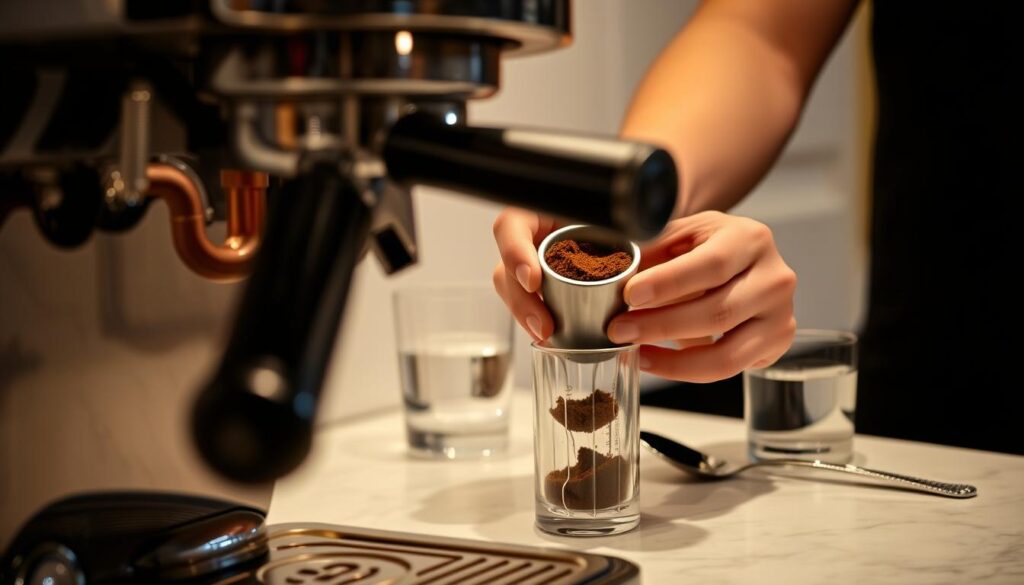
How Much Instant Coffee for Espresso?
When making instant espresso, getting the coffee amount right is key for a great taste. Knowing the right espresso instant coffee ratio is important. It makes a big difference in your drink.
Recommended Coffee-to-Water Ratios
Start with 2-3 teaspoons of instant coffee and 2 tablespoons of hot water. For a stronger taste, try 3 teaspoons of coffee. You can adjust these amounts to find your perfect flavor.
Measuring Instant Coffee for Optimal Flavor
Being precise with instant coffee measurements is important. Use a kitchen scale or measuring spoons for consistent flavor. Your taste preferences should guide you. If you like it stronger, add more coffee and enough water for a rich flavor.
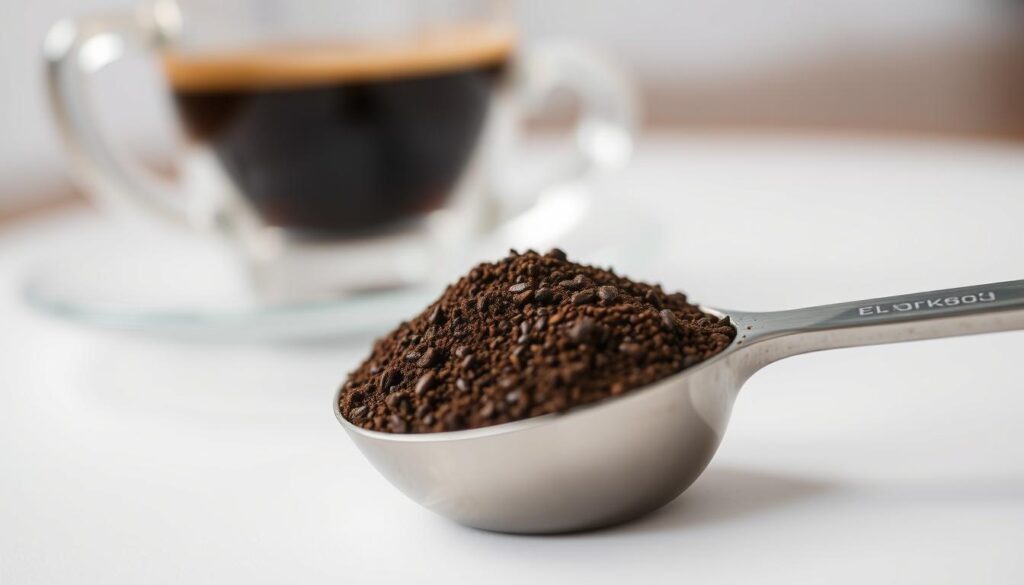
Factors Affecting Coffee Measurements
When making the perfect instant espresso, many things matter. These include the coffee and water amounts. Knowing these can make your coffee better.
Water Temperature and Its Impact
The water temperature is key to your espresso’s taste. Water that’s too hot can make it bitter. Water that’s too cold might not bring out all the flavors.
Try to keep the water at 155-160°F. This temperature is often preferred by coffee lovers. It helps make the espresso taste better.
Personal Taste Preferences
Your taste preferences are very important. Everyone likes their coffee differently. You might want it mild or strong.
Changing the coffee-to-water ratio can help. This lets you make your espresso just right for you. It’s a way to make your coffee special.
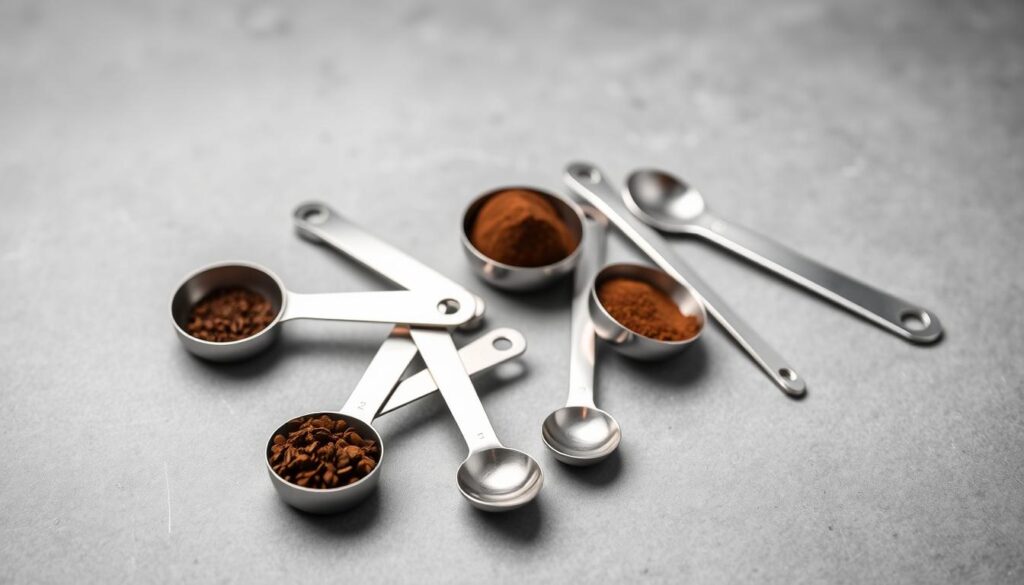
Tips for Making the Best Instant Espresso
To make the perfect instant espresso, pay close attention to every detail. This includes choosing high-quality coffee and the right tools. By picking the best elements, you can greatly improve your espresso experience.
Choosing Quality Instant Coffee Brands
Choosing the best instant coffee for espresso is key for rich flavors. Brands like Thrive Market, Mount Hagen, and Sun Alchemy are top choices. They are known for their quality and taste, making them perfect for instant espresso.
Using the Right Equipment
The right tools are essential for a delicious instant espresso. Use heatproof cups and sturdy stirring utensils for mixing. These tools help ensure the coffee dissolves well, giving you the flavor and texture you want.
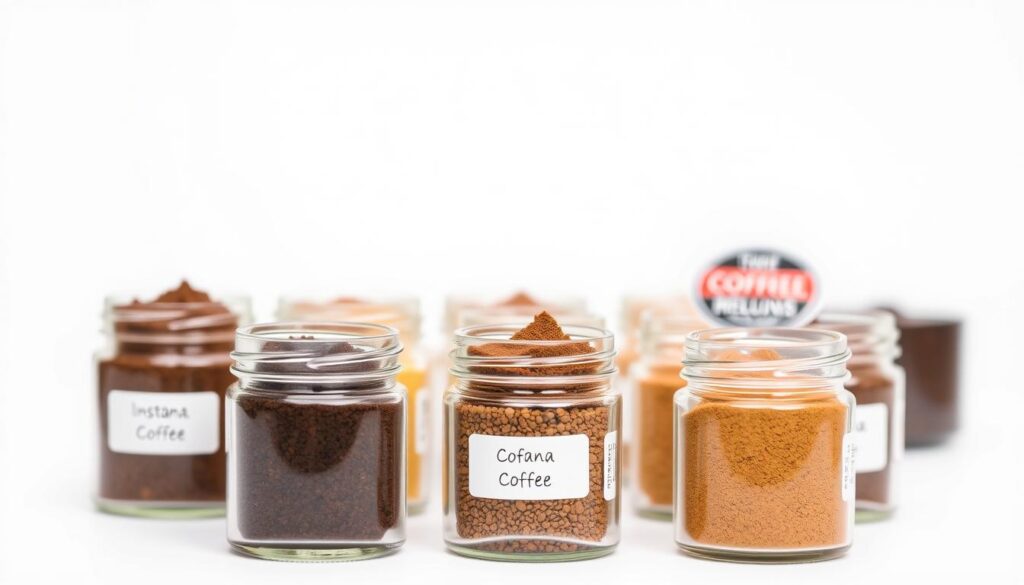
Troubleshooting Your Instant Espresso
Preparing instant espresso can sometimes be tricky. Knowing common mistakes can make a big difference. By avoiding these errors, you can always have a great cup of espresso.
Common Mistakes to Avoid
When you make instant espresso, a few mistakes can ruin your drink. Here are some common errors to watch out for:
- Insufficient stirring: Not stirring well can cause clumps that mess up the taste and texture.
- Incorrect water temperature: Water that’s too hot or too cold can make the espresso bitter or weak.
- Failing to measure proportions: Guessing the coffee-to-water ratio can lead to uneven results. Measuring accurately is key.
- Not allowing the coffee to dissolve completely: Instant coffee needs enough time to mix with water for the best flavor.
Adjusting Ratios for Taste
Finding the perfect balance between coffee and water is vital. Adjusting the ratio can tailor your espresso to your liking. By trying different amounts, you can explore a variety of flavors:
- Begin with a standard ratio, usually 1-2 tablespoons of coffee per 6 ounces of water.
- If your espresso is too weak, add a bit more coffee.
- For a bolder taste, use less water.
- Make small changes and taste as you go until you find your perfect strength.
Final Thoughts on Instant Espresso
Exploring instant espresso is all about trying new things. It’s okay to tweak your recipe until it tastes just right. Everyone likes their coffee differently, so it’s important to find what you love.
Try different brands and amounts to find your perfect match. This way, you can enjoy a cup that truly suits your taste.
Experimentation for Personal Preference
Instant coffee offers a fun chance to experiment. By trying out different brewing methods and measuring your coffee, you can discover new flavors. This journey is not only fun but also necessary to make your espresso special.
Keep in mind, what tastes good to one person might not be the same for another. So, don’t be afraid to try new things.
Embracing the Convenience of Instant Coffee
One great thing about instant espresso is how easy it is to make. You don’t need fancy equipment or to be a coffee expert. It’s perfect for when you’re in a hurry or just need a quick coffee boost.
It’s ideal for those who love coffee but want it to be simple. Instant coffee makes enjoying a great espresso easy and convenient.

